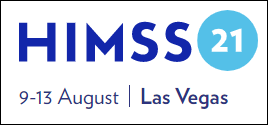John Gannon, MBA is president and CEO of Blue Spark Technologies of Westlake, OH.

Tell me about yourself and the company.
I’m CEO of Blue Spark. I have been here for about 10 years. I am an aerospace engineer by training and have spent time in banking and venture capital.
Blue Spark is a medical device company. Our primary product is TempTraq, which is a wearable, continuous temperature monitor that is designed for patients in clinical settings or remote patient monitoring environments. It’s an FDA-cleared device that is used by pharmaceutical companies and hospitals for early detection of fever.
What is the clinical value of having a patient’s temperature continuously monitored?
Temperature is the only vital sign that is not continuously monitored outside the intensive care unit phase. Temperature taking has been done globally the same way for about 150 years. It is done intermittently, taking the temperature once every four hours. In a number of disease states, patients deteriorate more quickly than within that four-hour window. That is where TempTraq plays a role, such as in oncology, where you have immunocompromised patients, or post-surgery where you are looking for infection, sepsis, or infectious disease.
The American Society of Clinical Oncology’s guideline for the US is that neutropenic fever should be treated within one hour, but they still only take their temperature once every four hours. The benefit of doing something continuously, as is done with pulse oximetry and blood pressure, is that identifying that fever early allows you to intervene sooner.
How does integration with other systems work, such as turning the stream of temperature data into something actionable?
We have designed the system to feed data into an electronic health record. EHRs are records of truth, but that is “records” as opposed to “monitoring devices.” We have a HIPAA-compliant cloud architecture called TempTraq Connect. We provide the hospital with a dashboard for real-time monitoring that can monitor either inpatients or those in remote settings, or we can push that information to their own internal systems. For example, it can go into an EHR, but we’re bringing a process live now where we are pushing data to the Vocera badging system so that nurses who are specifically aligned to rooms are getting actionable data in real time. It’s a flexible system.
What is the task management that is involved in changing a patient’s disposable patch?
Doctors we talked to at the outset of the design cycle asked for two features. The patch needs to be uniquely identifiable so you can associate a dataset with a unique ID, and then further associate that with a patient. Second is disposability. We are measuring the axillary temperature of an infectious disease patient for up to 72 hours. They don’t want to sterilize that device.
We have two versions that we sell into the hospital setting. We have a one-time use, 24-hour device and a one-time use, 72-hour device. When it’s done, you dispose of the device. The system will give you an alert 30 minutes before the end of its run time that it’s time to change that patch.
Is battery life the life-limiting factor?
Interestingly, it is not. It was a surprise in the development cycle that one of the more difficult things to get right was the adhesive. We wanted FDA clearance for all ages, which we have. We use a very gentle adhesive that is silicone gel based. That allows us to use that patch on all ages. But at the same time, we found that, particularly in adult patients wearing the 72-hour patch, the very gentle adhesive drives the end of life at 72 hours from both a hygiene and adhesive perspective. We certainly could design a patch that would run longer based on that battery, but the adhesive and hygienics were the limiting factors we found in our clinical studies.
What does the connectivity to the patch look like?
We use Bluetooth Low Energy. We are sending that signal in a hospital setting to a Bluetooth gateway that we install. It is specifically listening for TempTraq devices. That data is sent back to TempTraq Connect, our HIPAA-compliant cloud. For patients in an outpatient setting, they download our patient application to their device or use a device that is provided by the hospital or the pharmaceutical company that is running that software. Then the same thing happens to data. Once it gets Bluetooth from the patch to the phone, it is transmitted to TempTraq Connect.
Some consumer wearables, such as the Oura Ring, can measure temperature. How good is the reliability and accuracy of those devices versus TempTraq, where you had to prove your capabilities to the FDA?
The FDA is very prescriptive in terms of what is required to use a device as a clinical thermometer, which is the category we are in. FDA requires being compliant with the ASTM E1112 standard, which is plus or minus 0.1 degree Celsius within body temperature range. Beyond that, we also did clinical studies to show accuracy. We did our gold standard test at the Cleveland Clinic, where they were comparing TempTraq to readings from a pulmonary artery catheter in the chamber of the heart. The concluding statement of that study was that TempTraq was in agreement with core. Beyond what the FDA requires in terms of testing for submission, we also did human testing to show that that validation occurred on patients.
We’re seen a wide pandemic rollout of thermometer guns and walk-through fever-detecting frames that seem to offer limited accuracy and usefulness. Does that make people wary that devices like yours can actually work?
I think we’ve all had the experience of somebody using a gun and measuring our temperature at 94 degrees or something like that, hoping that it is still consistent with life. We are conscious that they have been used widely and are fairly erratic. We don’t generally run into those types of devices in the clinical setting, which is our primary market, so we don’t really view those as competitive devices. We make sure that people are familiar with the clinical studies and the standardized testing that we’ve done.
The “normal” temperature of people isn’t always the same 37 degrees Celsius. Is the change in someone’s temperature as important as its value at any given snapshot of time?
Absolutely. It has been studied over time that fever profiles across disease states have a distinctive footprint. The point that you made is a really important one, which is that 37 degrees Celsius or 98.6 degrees Fahrenheit is widely considered normal. But long, large studies have found that someone’s normal can have a standard deviation of plus or minus one degree Fahrenheit. Having a baseline and being able to look at trend data can absolutely be valuable when you are working with patients.
Is the future of the company always going to be related to temperature monitoring, or does your experience with patch technology provide more opportunities?
We view TempTraq as a platform. We have developed an unique database of continuous temperature data. Given the fact that there isn’t a lot of continuous temperature monitoring done outside of an intensive care unit, that makes that data more interesting.
We are looking at two areas of expansion. One is work that we are doing relative to being predictive around early warning. We have engaged with Adam Perer, PhD at Carnegie Mellon University to help us work on doing some of the artificial intelligence work around our network.
The other is looking at moving from univariate to multivariate, taking additional sensors and sensor readings into our database to help with that early warning score concept. But the other is looking at additional devices. We have a unique form factor in the TempTraq device. We will be looking at adding additional sensors to it, likely with a different device because the placement in the axilla under the arm, for example, is not a location that you would typically monitor another vital sign. So to do it effectively, we are probably looking a second device where we could bring in data from another vital sign.
Do you have any final thoughts?
It has been a really interesting year. If you go back 15 months, remote patient monitoring and telehealth were on the horizon, but hadn’t taken a foothold in the healthcare industry. COVID certainly has accelerated that. We have seen a breakdown of regulation to allow telehealth acceptance. We have seen a greater healthcare provider acceptance of telehealth. With that acknowledgement, there is a need to do remote patient monitoring. Not just temperature, but across all the vital signs. A lot of hospitals that we are engaged with today have initiated remote patient monitoring strategies, and we are hoping to work with them as they think through what that will look like.
There is a whole continuum of possibilities across different patient populations. We are an element of that, but it is certainly a multifaceted array of sensors that are being looked at to see what particular patient populations are most effectively tracked in the home setting. If you think about remote patient monitoring, going back a year, it really was around population health and chronic care, and now it is accelerating into the acute care setting. That is important for patients and important for overall healthcare cost. It’s an interesting time to be part of it.
Comments Off on HIStalk Interviews John Gannon, CEO, Blue Spark Technologies






























































Why does the displayed "exam room of the future" still have the classic "clinician has their back to the patient"…